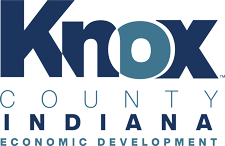Reprinted with permission from the Vincennes Sun-Commercial newspaper
If the ongoing COVID-19 pandemic has taught us anything, it’s the importance of reliable internet service.
Yet many here go without.
So the Knox County Development Corp. is renewing its efforts at finding solutions.
Chris Pfaff, CEO of the KCDC, this week announced the reorganization of a countywide Rural Broadband Taskforce, one founded more than two years ago by his predecessor, Kent Utt.
Its members will be charged with evaluating current broadband coverage throughout the county and developing solutions for a quicker build out of the infrastructure needed to extend services to underserved portions of Knox County.
Facilitated by Drew Garretson, chairman of the Pantheon’s Ag Tech Committee, and Pfaff himself, the makeup of the group is largely the same as before, boasting local and state leaders representing a diverse balance of interests, including agribusiness, education, government, healthcare, utilities, real estate, and internet service providers.
The primary difference, Pfaff explained, is that this group will look to secure funds from a different pot of money, specifically the Federal Communications Commission, which announced in December the launch of its Rural Digital Opportunity Fund designed to close the digital divide that often exists in rural America.
“The federal government is now going to be investing lots of money throughout Indiana and other states,” Pfaff said.
At least two regional tech companies — or consortiums — have secured funds by the FCC, funds that could potentially be invested here, Pfaff said.
It’s the committee’s goal to work with those consortiums that have secured these FCC funds to see if they can’t expedite the path to investment in Knox County.
“We have not made contact with them yet, but we intend to. The FCC gave them up to six years to make these investments,” Pfaff said, adding that he believes these companies could have upwards of $160 million to spend right here in Indiana.
The task force, comprised of 25 members, recently conducted an online rural broadband conference featuring presentations by Scott Rudd, director of broadband opportunities for Indiana, and Dr. Roberto Gallardo, director of the Purdue Center for Regional Development (PCRD).
The hope is that members of the committee can come from their respective environments — and with their respective knowledge and experience — to work together to serve as a liaison between Knox County and the tech companies with the money to invest here.
“We want to lower the barriers to make these investments happen here more quickly,” Pfaff said. “We want to be able to say, ‘Hey, if you’re experiencing challenges in getting fiber in the ground in Knox County, this task force is made up of individuals that can help.
“We just want to create a dialogue to expedite the process.”
But the need for high-speed internet service in Knox County has been a topic of conversation for nearly three years.
Many living in rural areas say they have none at all or experience very unreliable — or sometimes too expensive — service.
The FCC’s own study, Pfaff said, indicated several areas here with a lack of internet service, particularly areas in and around Bicknell and Edwardsport, among others.
The KCDC, under then president Kent Utt’s guidance, first formed an advisory council to look specifically at expanding broadband service more than two years ago.
The initial intent was to apply for a $50,000 planning grant to aid the committee in moving forward with a goal to secure some of the $100 million set aside as part of Gov. Eric Holcomb’s Next Level Connections program to bolster internet service.
The KCDC back then failed to secure the funds, but it did work briefly with two local internet providers on an application for a portion of those same state monies.
Tim Trotter with Echo Wireless and Clark Anderson, owner of AnderSat in Bicknell, had hoped to submit a joint application for a $5 million grant — one with with a required 20-% match — for internet vendors willing to expand and invest in broadband infrastructure, specifically in under-served areas.
Later, however, they opted not to move forward.
The KCDC, too, in 2018 partnered with Purdue University in a study that identified gaps in broadband service.
The study looked at the availability of high-speed internet service in Knox, Martin, Daviess, Lawrence and Greene counties. Commissioned by Southern Indiana Development Commission in Loogootee, it revealed that 21% of residents say they have no internet access at all, and 44% say they have access to only one provider.
And about 45% of households with children in the five-county area — or almost 9,000 households — say they don’t have internet, therefore widening even more what Purdue calls the “homework gap” among Hoosier students, meaning they don’t have access to the growing amount of online or digital curriculum.
That particular issue has only been highlighted more in 2020 as kids were sent home to participate in e-learning as a result of the COVID-19 pandemic.
The need for reliable internet for things like remote working and tele-health opportunities has also been highlighted.
Much has changed in the last two years, Pfaff said, and it’s possible the KCDC’s new broadband task force will look once again to the state for funds for a planning grant, perhaps to be spent on a broadband study of its own.
“One thing I think we need is a local assessment,” Pfaff said, “so we can get a better idea of what specific households do have coverage and which don’t.”
Affordability, he said, also must be a part of the conversation.
“We may have areas that are served, but perhaps the price point doesn’t fit a households’ ability to pay,” he said.
“All of this will be part of the conversation as we move forward,” he said.
